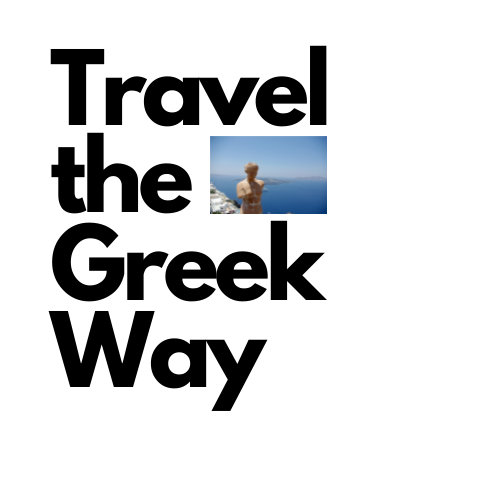Mycenae in Peloponnese Greece is a spectacular UNESCO-listed monument. The site contains the remains of a magnificent prehistorical fortified Palace and vaulted tombs of immense cultural significance for world history.
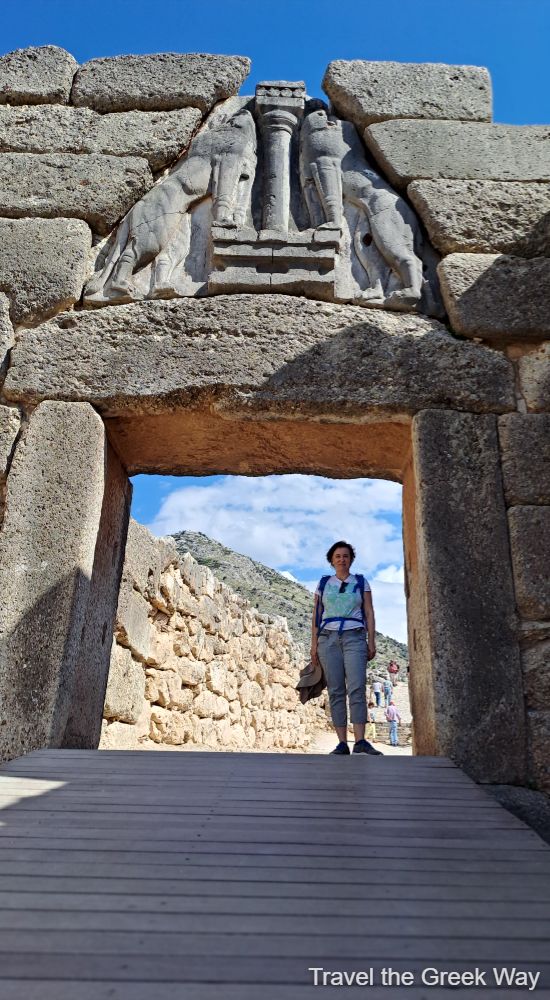
Mycenae used to be the powerful financial and administrative center of the Mycenean civilization (c.1650-1060 BCE) and one of the largest centers of Greek culture.
Mycenae inspired the great poet Homer to compose his famous epic poems, Iliad and Odyssey. In the Iliad, Mycenae was mentioned as ‘Golden’ because of the mass of golden objects that it was decorated with and were found in the excavations. He also considered the town to be the seat of King Agamemnon, who led the Greeks in the Trojan War.
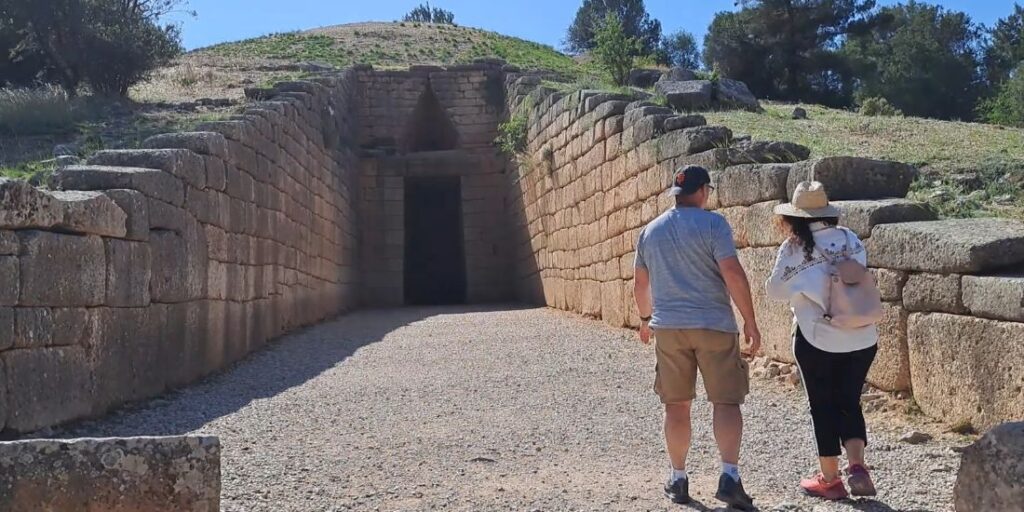
Today, at the archaeological site of Mycenae you will visit two parts:
- The famous Tholos tomb, known as the ‘Treasury of Atreus’, with its gigantic lintels and tall beehive vault
- The Lion Gate, the citadel’s monumental entrance, the ruins of the Palace, the cemetery, and the museum
Discover in this post all about the Citadel of Mycenae, the spectacular vaulted royal tombs, the museum, and practical information.
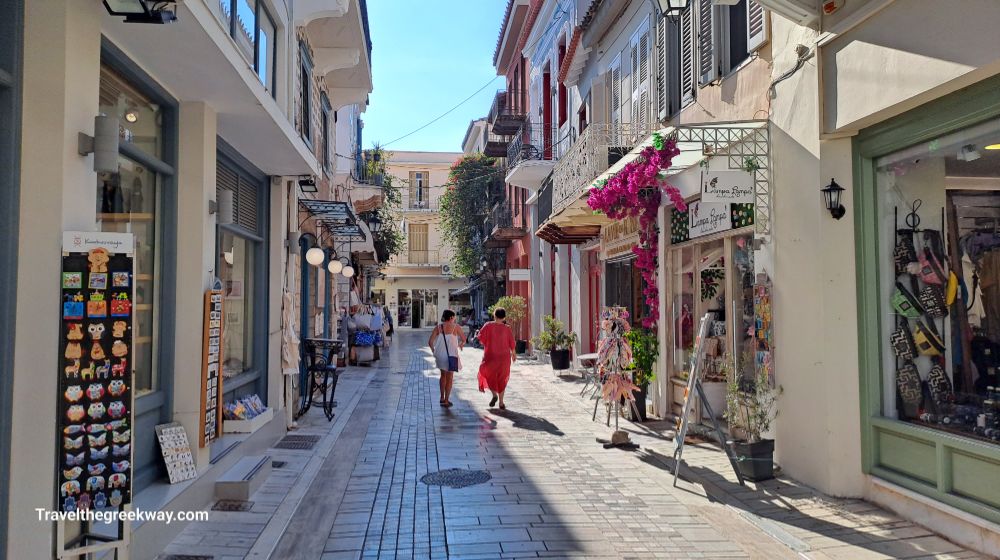
I suggest you spend at least 2 days in the region of Argolis as it offers wonderful places to visit besides Mycenae: Nafplion is an ideal place to stay overnight and UNESCO Epidaurus is a remarkable place to visit!
*Some of the links in this post are affiliate links. That means I may make a commission if you click and buy. The commission comes at no additional cost to you.
Mycenean Civilization
My Latest Video on Mycenean Greece
Tiryns, an ancient Mycenaean citadel located in the Peloponnese of Greece, is famed for its massive cyclopean walls and palace complex. Dating back to the Bronze Age, it offers insights into prehistoric architecture and society, attracting visitors with its historical significance and impressive ruins.
The Kingdom of Mycenae
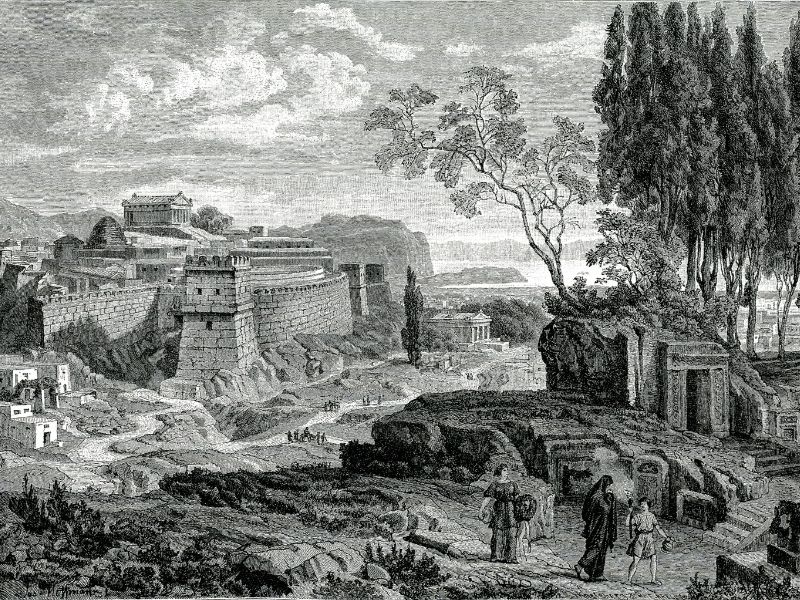
Mycenaen Palace was built on two remote steep hills in Argolis, Peloponnese. The king and his family used to live inside the fortified walls of a palace with a militaristic infrastructure of genius architecture.
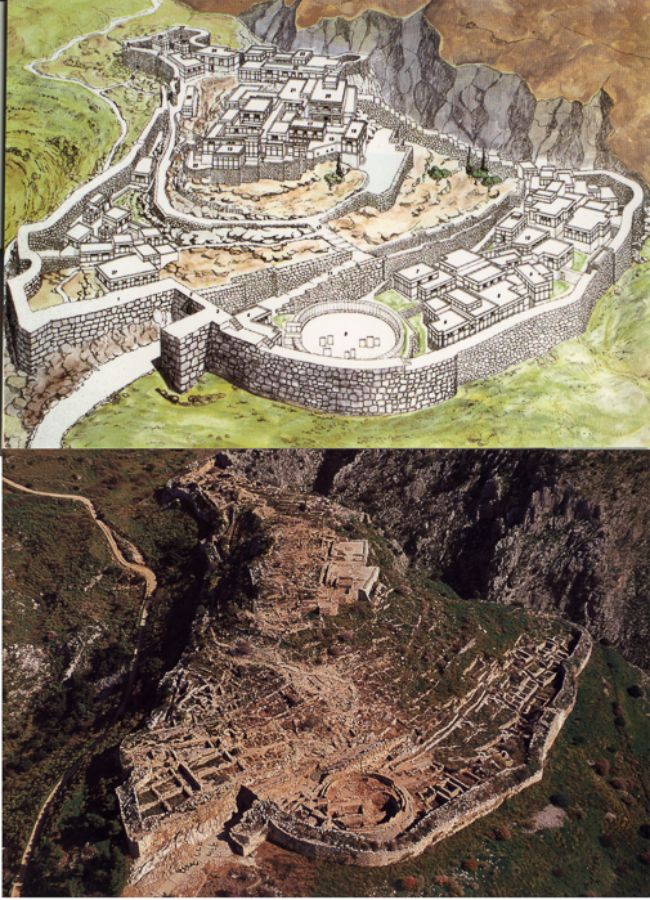
Around the walls, there were small settlements and estates with agricultural characteristics. When there was any outside danger, everyone would go inside the walled palace for protection.
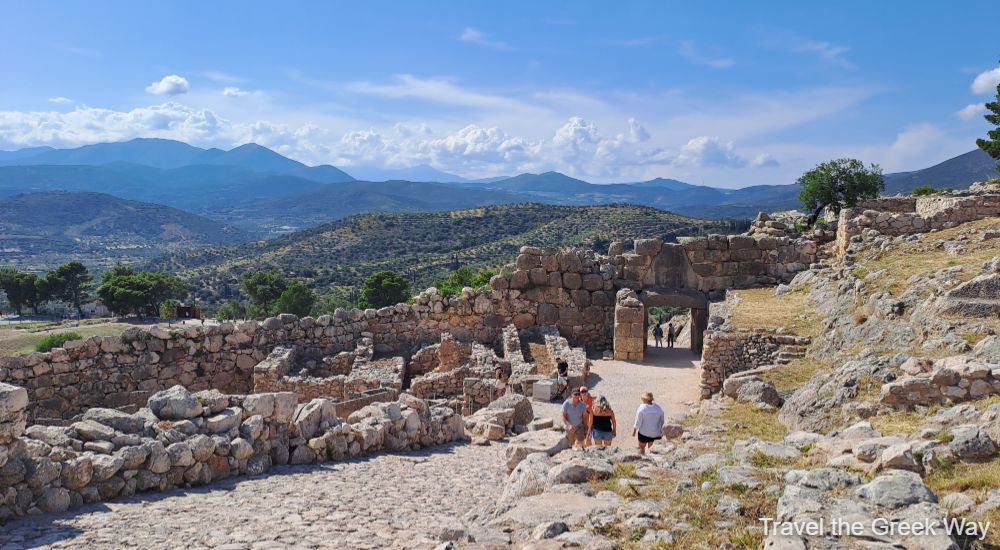
The economy of the Mycenaeans was based on agriculture, animal husbandry, ivory industry, stoneworking, and metallurgy. However, the greatness of the Mycenaean world was mainly due to the development of shipping and trade. One important port was Asini, near Nafplion.
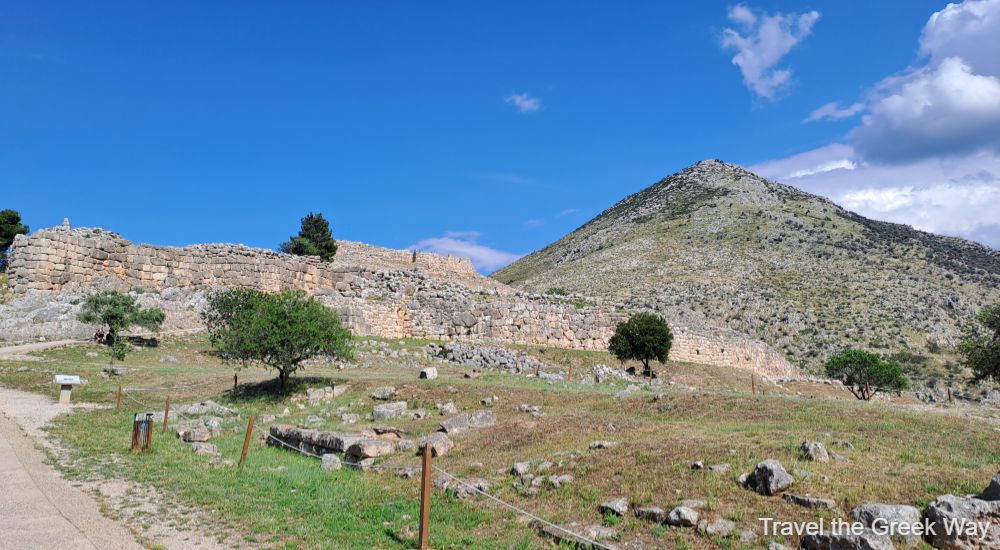
From the mid-15th century BC, the Mycenaeans – as historians claim- conquered Knossos in Crete. The Greek Mycenaean element gradually dominated the sea and spread to the Mediterranean.
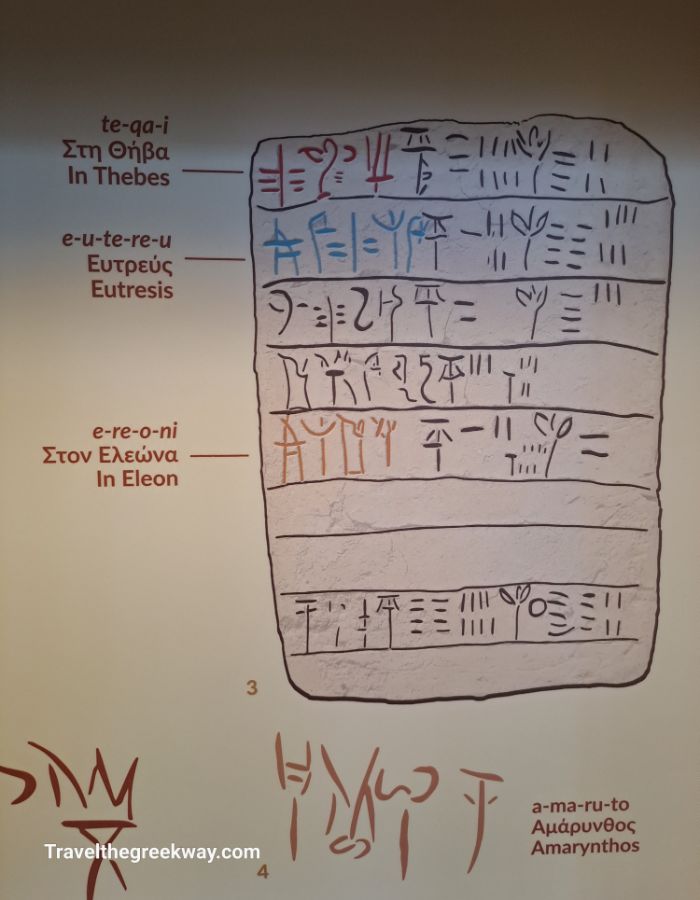
The most important source for the cultural geography of the Mycenaean world is the archaeological finds and the Linear B texts.
** A fantastic historical tour that you can book is the Mycenae and Epidaurus Day Trip from Athens with entrance tickets.
Lion Gate Mycenae

As soon as you pass by the ticket kiosk, the paved area will lead you to the monumental entrance to the Citadel of Mycenae. The walls that lead to Lion Gate are made of enormous blocks of stones known as Cyclopean Masonry. Above the lintel of the Gate, there is a large triangular relief containing two headless animals with leonine bodies.
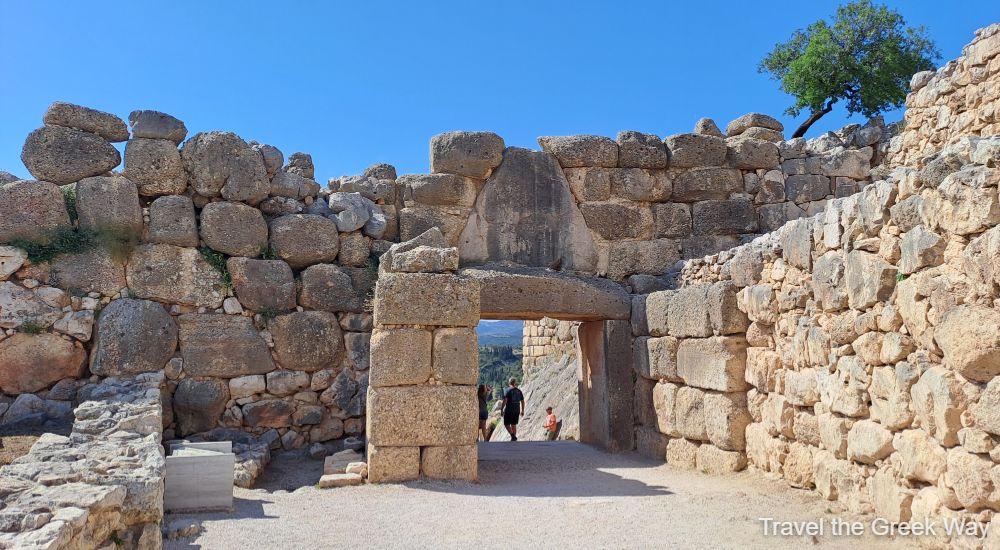
The Gate (built c.1249 BC) could be closed by a double, heavy wooden door that was secured by a sliding bar. The Lion Gate is the first monumental sculpture in Greece.
Grave Circles
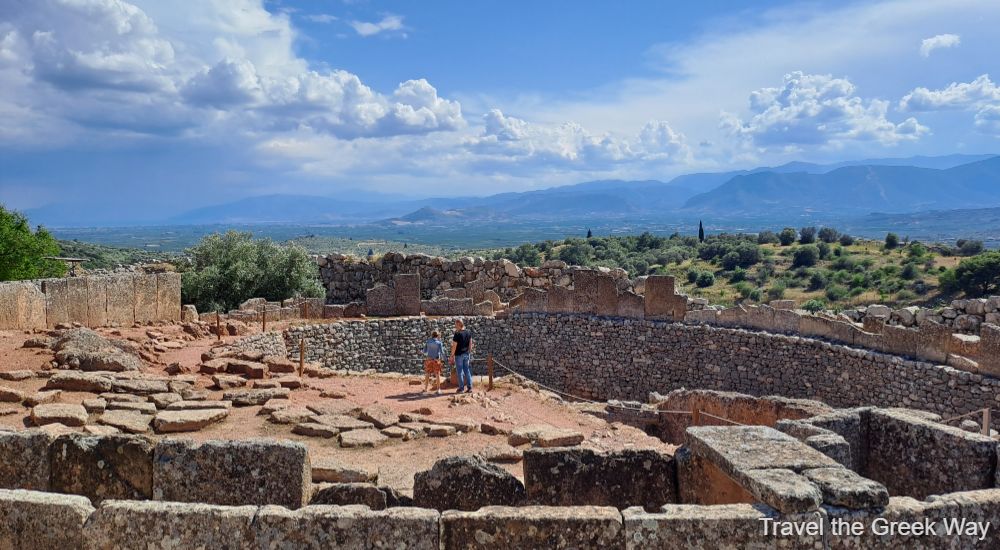
A striking feature of the Archaeological site of Mycenae is the Grave circles A and B which are the location of the royal burials.
Grave Circle A is located immediately to the right inside the Lion Gate and contains six shaft graves.
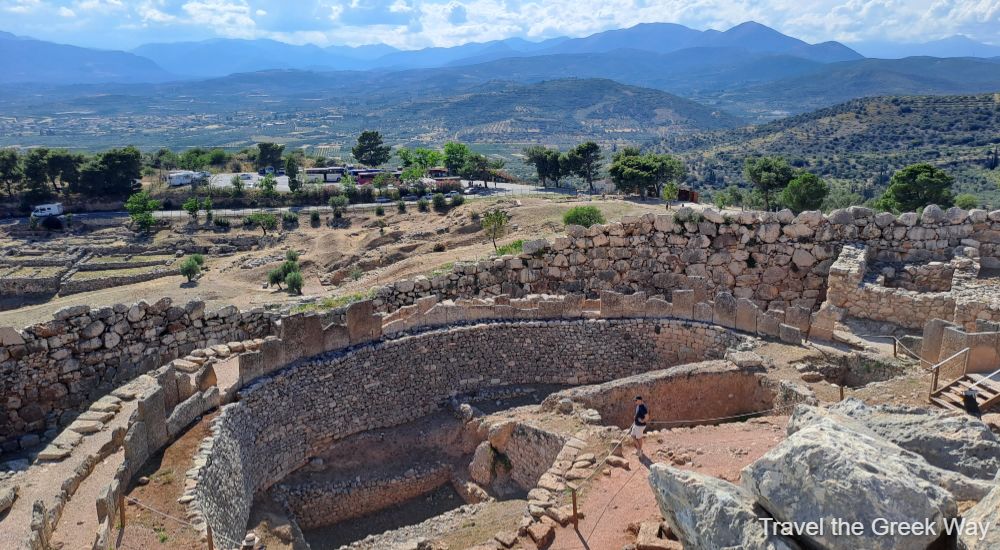
Inside the graves, the archaeologists found 19 skeletons, spectacular burial items, golden face masks, and items that belonged to the deceased.
The most famous find is the mask discovered by Schliemann in the summer of 1876 while digging in Grave Circle A. It was one of seven death masks discovered in the same grave circle, alongside an enormous cache of gold artifacts.
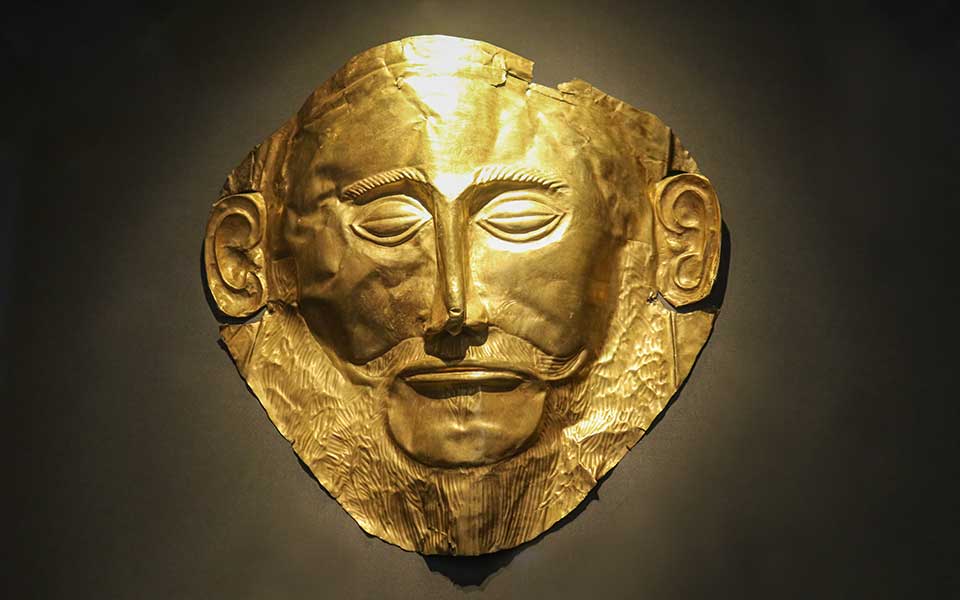
The hammered gold mask became the most iconic symbol of Mycenaean culture. The mask’s regal appearance led to its association with Agamemnon. However, modern archaeological research has tentatively dated the mask to the second half of the 16th century BCE, at least 300 years before the Trojan War of Iliad (Source: Greece-is).
The mask is currently on display in the Mycenaean Gallery (room 4) of the National Archaeological Museum in Athens.
The Palace
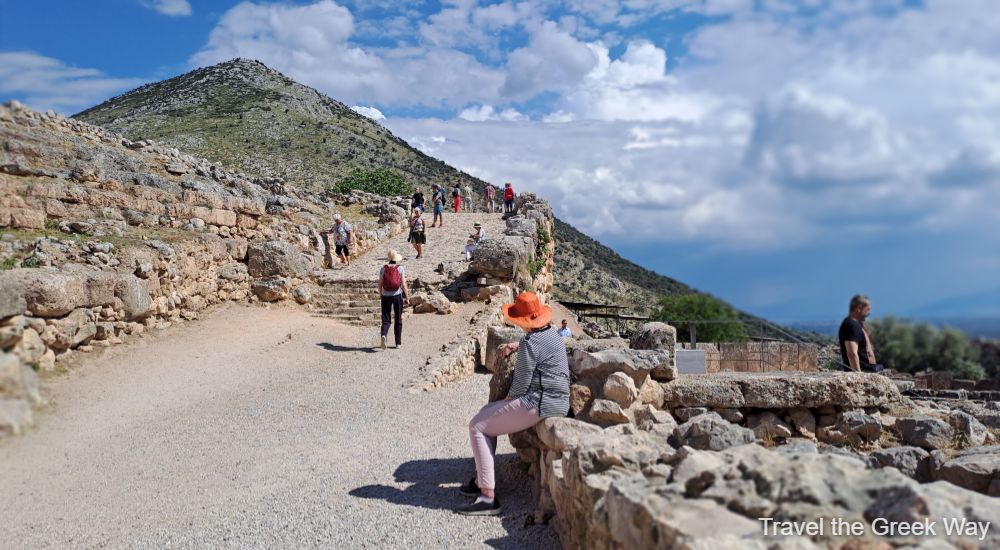
The Palace was built on top of the hill and must have been constructed in the 14th century BC. After the Grave Circle A, the path leads you to the southwestern entrance of the palace. The few remains of the Palace indicate that there was a throne room, landings and staircases, a shrine, a hearth, guest chambers, and storerooms.
It is a bit uphill and if you are visiting during summer, take a lot of water with you, and a hat.
The Museum
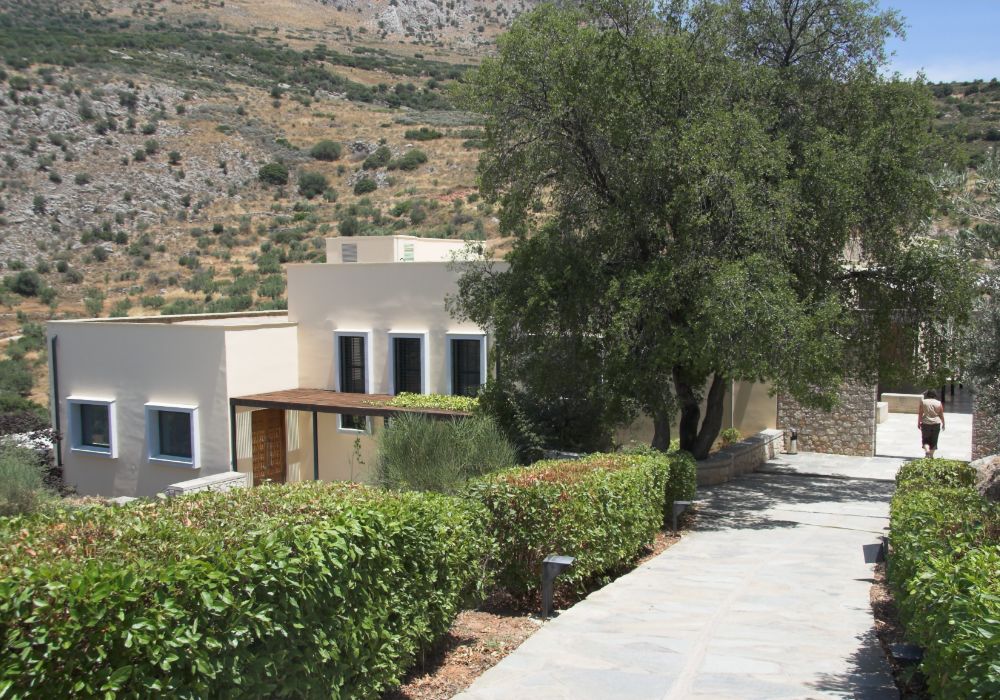
The in-house Archaeological Museum is located north of the Acropolis of Mycenae. Its exhibits are representative samples of the life and posthumous perceptions of the Mycenaeans.
The exhibition develops in a total of four halls arranged on two different levels and follows a circular path with the help of inclines. There is educational material and excellent views of the areas once occupied by the cemeteries of the Mycenaean nobles.
** After my unforgettable experience on the 3-Day Tour: Epidaurus, Mycenae, Nafplion, Olympia, and Delphi, I can’t recommend it enough for anyone looking to explore in-depth Classical Greece!
Grace Circle B: The Vaulted Tombs
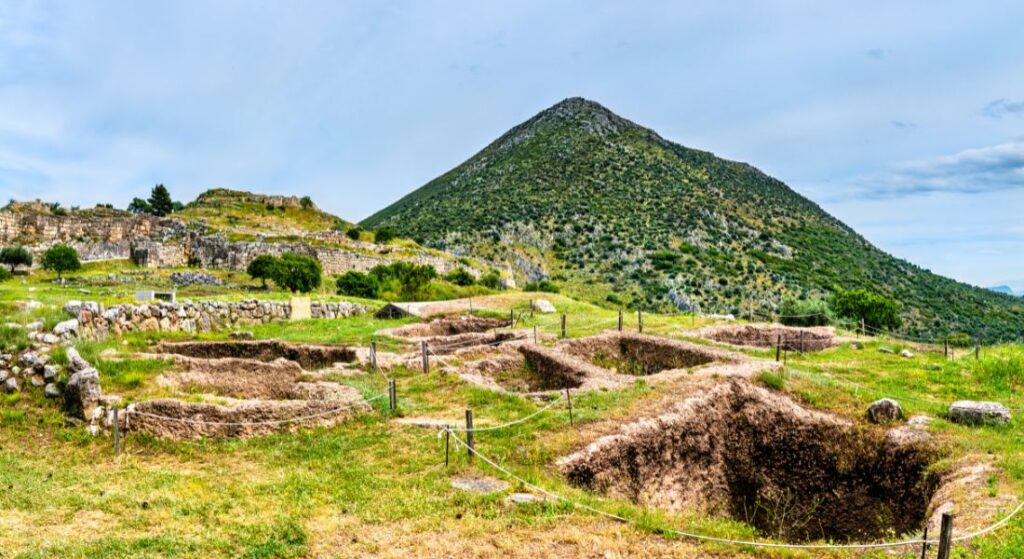
Grave Circle B is located outside the walls of Mycenae and contains 14 pit graves with precious objects of gold, ivory, and rock crystal. There are also 4 vaulted tombs: the tomb of Aegisthus, of Lions, and Clytemnestra. While its name implies that Agamemnon’s wife was buried in it, there is no such evidence to prove it. The fourth Tomb is the Treasury of Atreus, the most brilliant and impressive tomb of the Mycenaean civilization.
The Treasury of Atreus
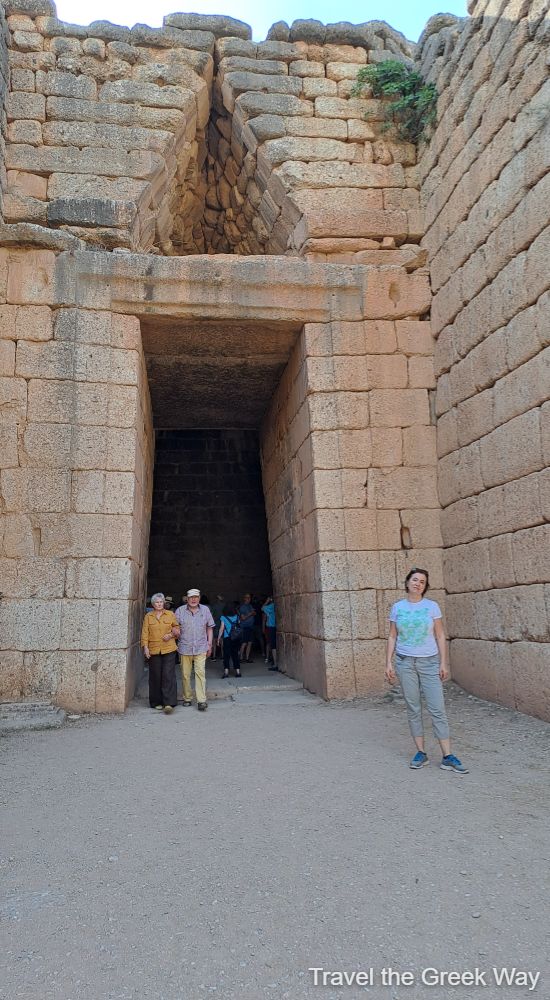
The vaulted tomb of the Treasury of Atreus or Tomb of Agamemnon, is built south of the main area of the Mycenean Site. It is dated between 1350 and 1250 BC and it was certainly used as a burial spot for a royal member.
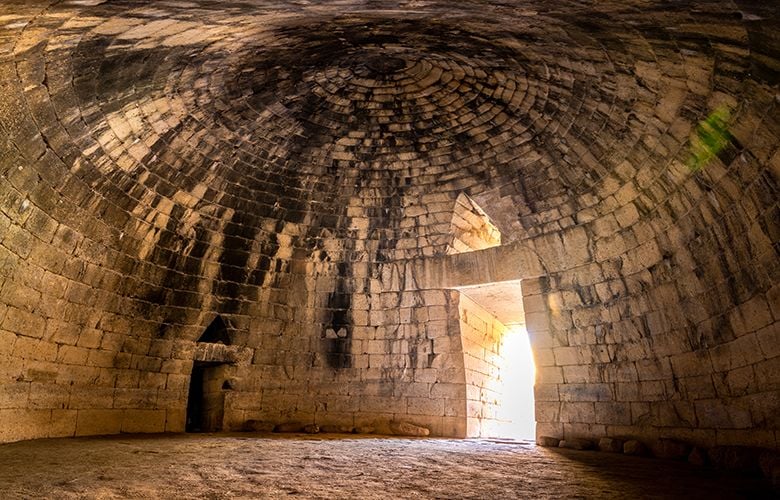
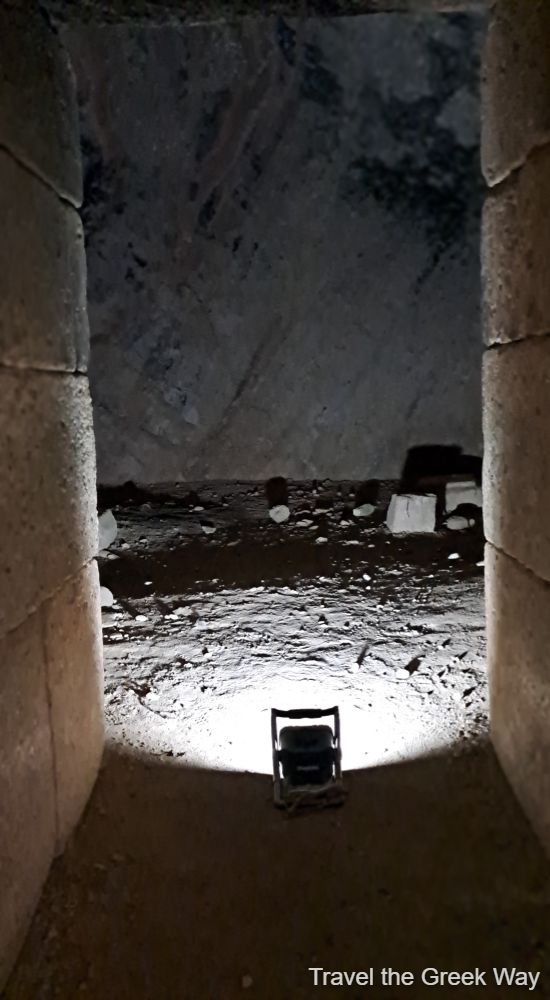
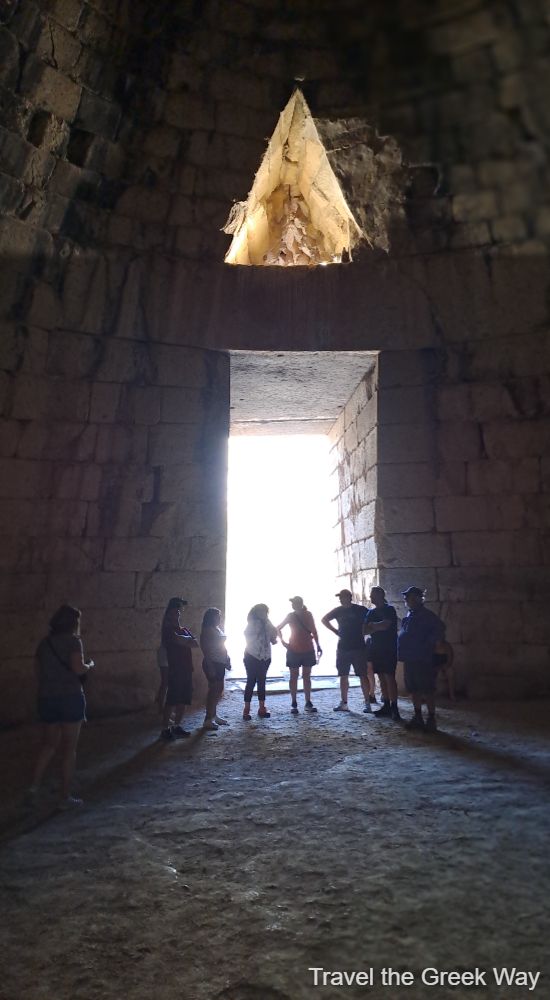
With an internal height of 13.5 meters and a diameter of 14.5 meters, it was the tallest and widest dome in the world for over a thousand years, until the construction of the Pantheon in Rome.
Decline of Mycenae
There are a few speculations and research data that explain the decline of Mycenae which began in the 12th century BCE.
Some researchers claim that natural disasters such as earthquakes and decades of drought led to the centers being abandoned. Other scientists attribute it to the movement of new Greek tribes (the descent of the Dorians). Another political explanation would be the turmoil of the eastern Mediterranean basin, with the fall of the Hittite state and the attacks of the so-called “peoples of the sea” against Egypt. This upheaval resulted in the decline of Mycenaean trade and the gradual decline of the Mycenaean palaces due to the economic crisis.
Mycenae continued to exist as a small city-state, and the walls were not pulled down. In 480 BCE Mycenae sent 400 men to fight against the Persians at Thermopylae, and Plataea in 479. It was destroyed by Argos City in 468 BCE. There are traces that during the Hellenistic and Roman periods, Mycenae revived but when Greek traveler and geographer Pausanias visited the site about 160 CE, he found it in ruins.
Mycenaean Civilization FAQ
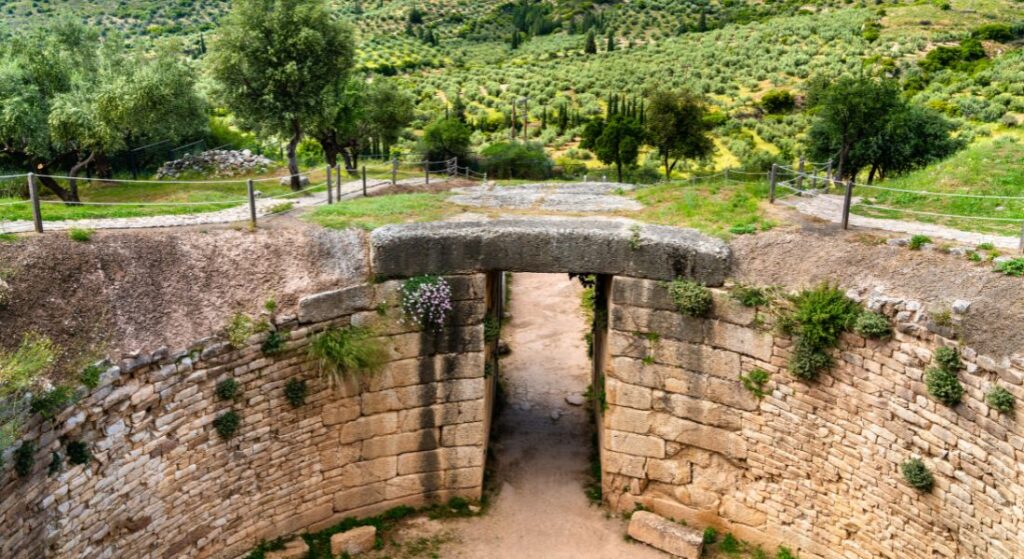
Entrance Details
From 1 April to 31 October, the entrance ticket is €12,00.
From 1 November to 31 March, there is a reduced ticket: €6,00
There is also a combo ticket of €20 valid for 3 days including entrance to:
- Archaeological site and Museum of Mycenae
- Byzantine Museum of Argolis
- The archaeological site of Tiryns
- Archaeological Museum of Nafplion
- Fortress of Palamidi
- The archaeological site of Asini
The time of operation is between 8.00 to 20.00 dependent on the month you are visiting. For more info, you can contact them here efaarg@culture.gr
The site is accessible and has restrooms and a small shop within the museum.
Can I drink or eat inside Mycenae?
You are not allowed to eat or drink inside any archaeological site in Greece, only water is allowed to be carried around.
Do I need cash or do they take credit cards for the entrance?
You can pay either with cash or with a credit card at the entrance of the site.
Where was the Mycenaean Civilization Located?
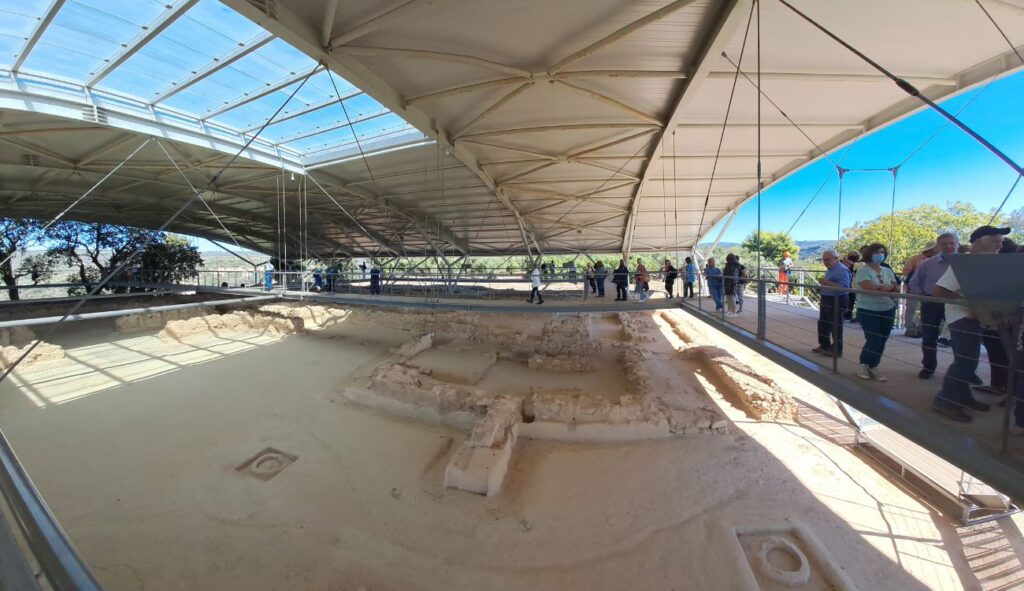
The Mycenaean culture had spread in both the mainland and the Greek islands. The most important Mycenean cities were on the mainland: Mycenae, Midea, Tiryns, Pylos, and Argos in the Peloponnese, Athens (in Acropolis and Thorikos), Thebes and Orchomenos in Beotia, and Iolkos in Thessaly. Of all sites, the Kingdom of Pylos is the best preserved Mycenean Palace in all mainland of Greece.
The different cities of the Mycenaean civilizations had many common traits:
- common language – first testimonies of the Greek language, preserved on Linear B tablets
- common religion and the posthumous beliefs
- uniformity in socio-political organizations and institutions.
Who first excavated the Palace of Mycenae?
Kyriakos Pittakis, of the Greek Archaeological Society, cleared the Lion Gate in 1841. Heinrich Schliemann started excavations in the mid-1870s following descriptions of Mycenae by Homer. In 1888, Greek archaeologist Christos Tountas continued Schliemann’s work revealing the Mycenaean Acropolis and the domed tombs.
Best Guided Tours in the Peloponnese & Delphi
- Epidaurus, Mycenae and Nafplio Small-Group Tour from Athens
- Ancient Sparta & Mystras Private Day Tour from Athens
- 2 Day Private Tour in Delphi, Ancient Olympia and Nafpaktos town
How Long Did the Bronze Age Last?
The Bronze Age in the Aegean lasted about 2.000 years, between c. 3000 and 1000 BCE. It is called the Bronze Age because during this period the civilizations were either using, producing, or trading bronze.
Which are the Other Bronze Age Civilizations?
The Minoan civilization flourished mainly in Crete and a few other Aegean islands between 3.000 and 1450 BCE until it ended around 1100 BCE. It represents the first advanced civilization in Europe.
The Cycladic civilization flourished between 3200 and 2000 BCE on the Cyclades Islands. Minoan, Cycladic, and Mycenaean civilizations developed independently and influenced each other. Some of the other important civilizations in the Mediterranean included the Phoenicians (2500-64 BCE), the Egyptians (3000-332 BCE), and Mesopotamians (8000-2000 BCE).
Note: Mesopotamia used to be what is modern-day Iraq, Kuwait, and parts of Syria.
Mythological History of Mycenae
According to Pausanias, the mythical Perseus, son of Zeus and Danae, daughter of the king of Argos, founded Mycenae and Tiryns (another UNESCO Mycenaean Site near Nafplion).
Eurystheus, the last king of the Perseid dynasty, was the one who commissioned Herakles (Hercules) to perform his twelve labors (remember the Lion of Nemea?) Eurystheus was killed fighting the Athenians, and Atreus, the son of Pelops became the king of Mycenae and started the Atreid dynasty.
Atreus’ son, Agamemnon led the expedition against Troy but was murdered by his wife Clytemnestra upon his return to Mycenae.
Film Tip: A masterpiece of Electra of Sophocles, was filmed in Mycenae in 1962 and describes the death of Agamemnon and how Electra took revenge. You can watch it on YouTube here.
Where Best to Stay for Mycenae
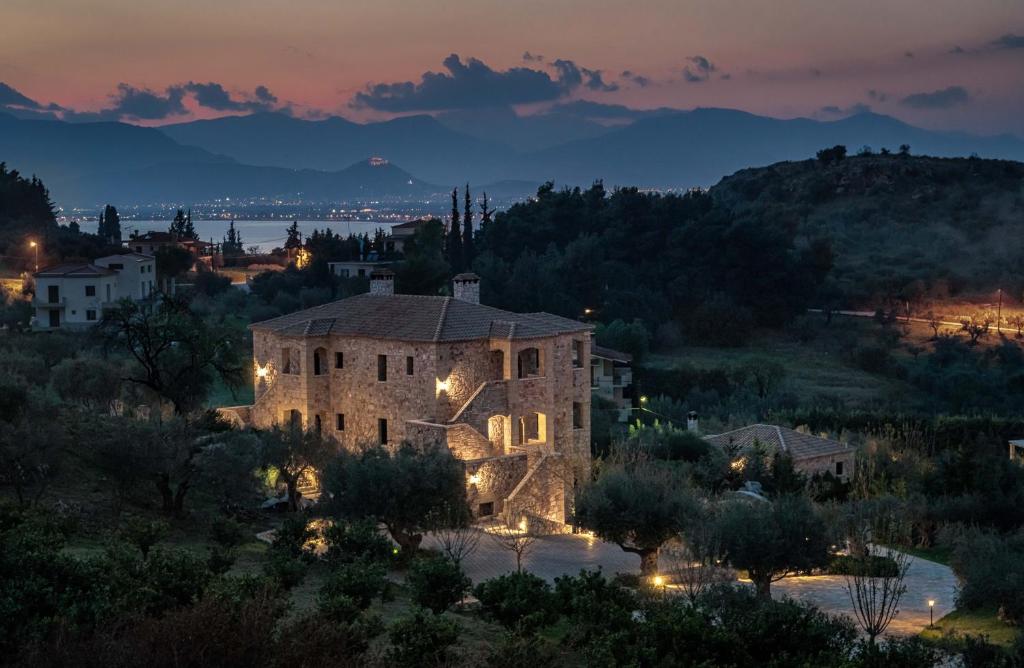
You can visit Mycenae on a day trip from Athens but I strongly advise you to stay overnight in the gorgeous Nafplion, which is just 25 km.
If you love traditional stone houses with superb views below the old town walls then you will love Marianna Hotel or Klymeni Traditional Homes.
If you prefer to stay centrally at Syntagma Square in Nafplio with beautiful views of Palamidi castle, then you should stay in Xenon Inn.
How to Get to Mycenae
Mycenae is 120 km southwest of Athens and is very easy to get there via the National Road E94. If you rent a car, I use Discover Cars, you can stop along the way to other popular destinations in the area such as :
- Corinth Canal
- Ancient Corinth and Acrocorinth
- Isthmia Archaeological Site
- Nemea Archaeological Site and Wineries
If you don’t want to drive, you can take the KTEL buses from Athens.
Plan My Trip to Greece
Do you need a custom travel itinerary or a transfer within Greece? Are you traveling solo, with your family or friends and need a tailor-made multi-day tour or a transfer?
If yes, please visit my dedicated Plan My Trip Page for a personalized itinerary!
For more travel to Greece tips and beautiful destinations in the Greek islands please join my FREE Facebook Group or SUBSCRIBE to my YouTube Channel for amazing videos of Greece, I would love to welcome you! Until then happy and safe travels, Evgenia.
My Most Popular Posts
- Wine Tasting in Nemea
- Discover Ancient Corinth and Acrocorinth
- 4 Days Peloponnese: Mycenae, Nafplio, Olympia
- 8 Days Peloponnese: Nafplio, Kardamili, Monemvasia
- Top Things to Do in Porto Heli
How to get to Athens Port (Piraeus) from Athens Airport

- Bus: If you are arriving at Athens International Airport you can travel straight to the port by taking the X96 express bus (€5.5, children <6 yo, free entrance), which departs every 40 minutes and the average trip lasts 1 hour – runs 24/7.
- Metro: (€9) is easily found across airport arrivals (blue line – M3) going directly to Piraeus port. The average trip to Piraeus lasts 1 hour.
- Taxis are available in front of the airport (around €40 to Athens, €55-60 to Piraeus (depending on the traffic in Kifisos), and take up to 3 or 4 people with small luggage)
- Rent a car with Discover Cars for reliable, new cars at affordable prices
- You don’t like driving but love hassle-free solutions? Book a Private transfer with an English-speaking driver from Athens International Airport to Piraeus Ferries, or anywhere else in Greece
- Are you looking for domestic flights in Greece? Check out the official Aegean Airlines Website.
Essential Travel Info for Greece
- ‘Hello’ and ‘Thank You’ in Greek: “Ya sou” and “Efharisto”
- Booking.com: I use Booking.com mostly for Europe.
- Expedia: I use Expedia for the rest of the world.
- All-Inclusive Resorts in Greece
- FerryScanner to book ferries to the Greek Islands
- Rent an Affordable Car in Greece
- Athens Metro Website (timetables and ticket info)
- Trains (Hellenic Train)
- Public Buses KTEL
- Get Your Guide: For all your day or multi-day tours and city guide needs, I use Get Your Guide
- Emergency Numbers Anywhere in Greece: AMBULANCE 166 – FIRE 199 – POLICE 100– EMERGENCY NUMBER 112
